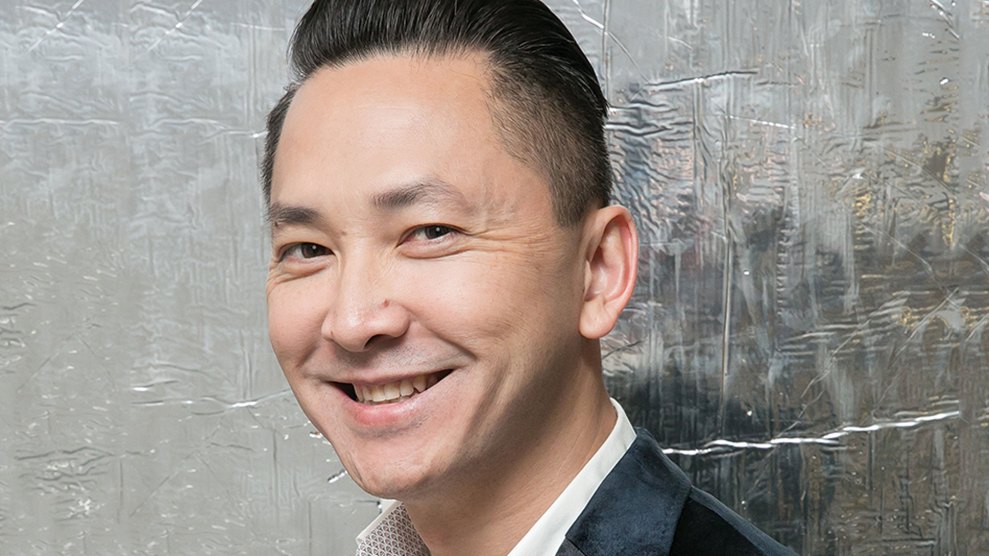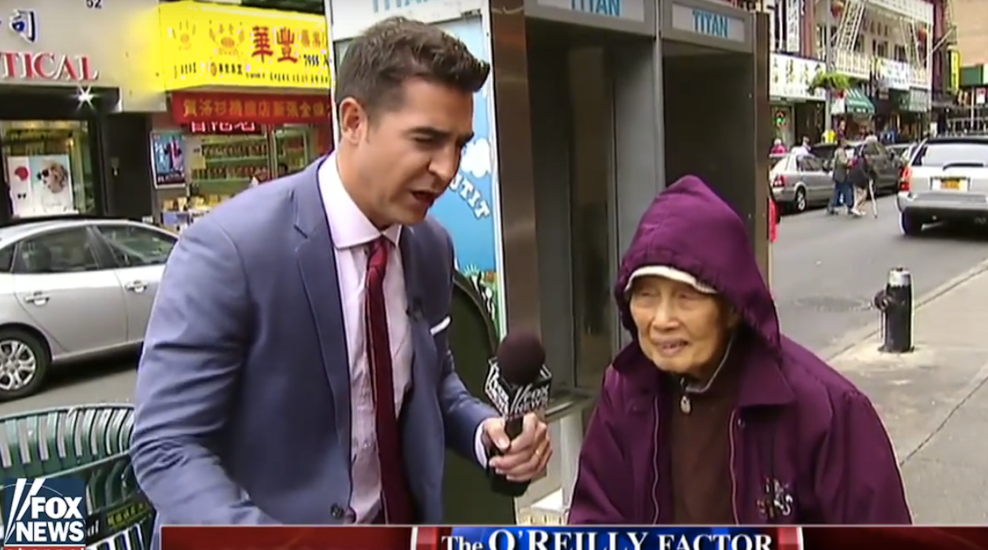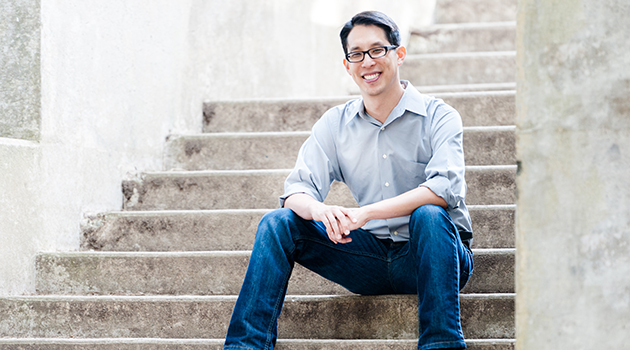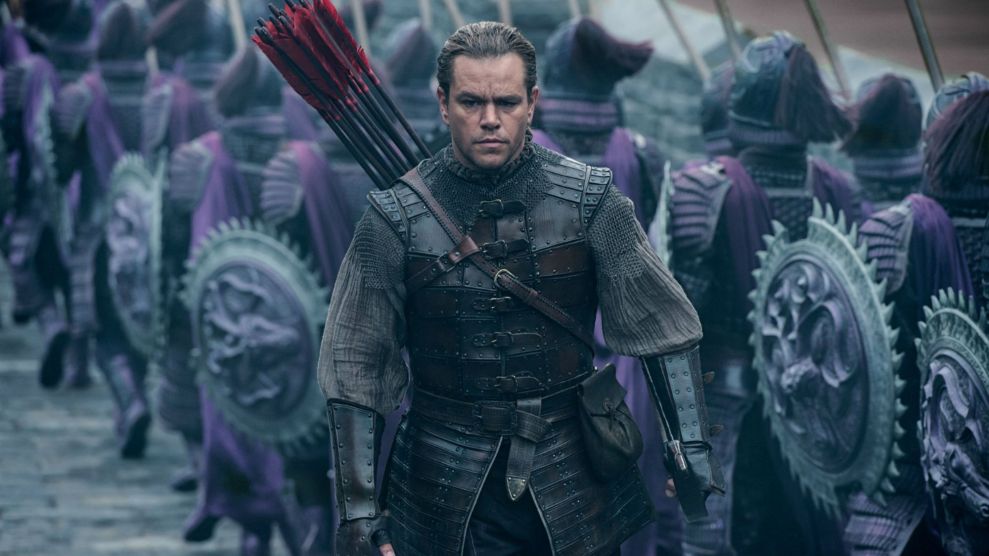
Matt Damon as William Garin in The Great Wall.Jason Boland/Universal Pictures
Chinese director Zhang Yimou, of Hero and House of Flying Daggers fame, made his English-language debut with The Great Wall, which opened Friday. But in a story set in ancient China, Matt Damon’s character sticks out like a sore thumb. The presence of his pale mug in movie posters and trailers drew backlash even before the film’s release. “We have to stop perpetuating the racist myth that only a white man can save the world,” Fresh Off the Boat actress Constance Wu wrote in a Twitter tirade. “We don’t need salvation.” Damon and Yimou both publicly defended the film, with Damon calling it “historical fantasy.”
The lack of people of color in starring roles is a longstanding Hollywood problem, and things are especially bad for Asians. A 2016 study (PDF) by the Annenberg School for Communications and Journalism at the University of Southern California found that more than half of films and TV shows had no speaking roles for Asian characters—and it’s exceedingly rare to see Asians in lead roles. Producers often claim there just aren’t enough roles for Asian actors, which is true—or vice versa, which is not. Often, when the opportunity arises to cast Asian characters, Hollywood decision-makers hire white actors to portray them. Sometimes they simply rewrite nonwhite characters as white ones. These things are called whitewashing.
The Great Wall exemplifies a related Hollywood trend where white characters play a dominant role in a foreign situation, while nonwhite locals are reduced to sidekicks or people “to be killed or rescued—or to have sex with,” as the Pulitzer Prize-winning author Viet Thanh Nguyen put it recently. Vogue recently added to the outrage over cultural tone-deafness by presenting Karlie Kloss, an American model of German and Danish descent, as a geisha—for the magazine’s diversity issue, no less. Vogue later removed the photographs from its website and Kloss apologized for her participation, but it was yet another episode in America’s long history of whitewashing Asians. We’ll leave you with this brief history of the same. Dig around and you’re sure to find plenty more.
- 1926
-
The first Charlie Chan film is released, starring Japanese actor George Kuwa, but the films fail to win large audiences until Warner Oland, a Swedish actor, takes on the role. The Chan films become extremely popular, with more than 40 made, but are later criticized for racist stereotypes.
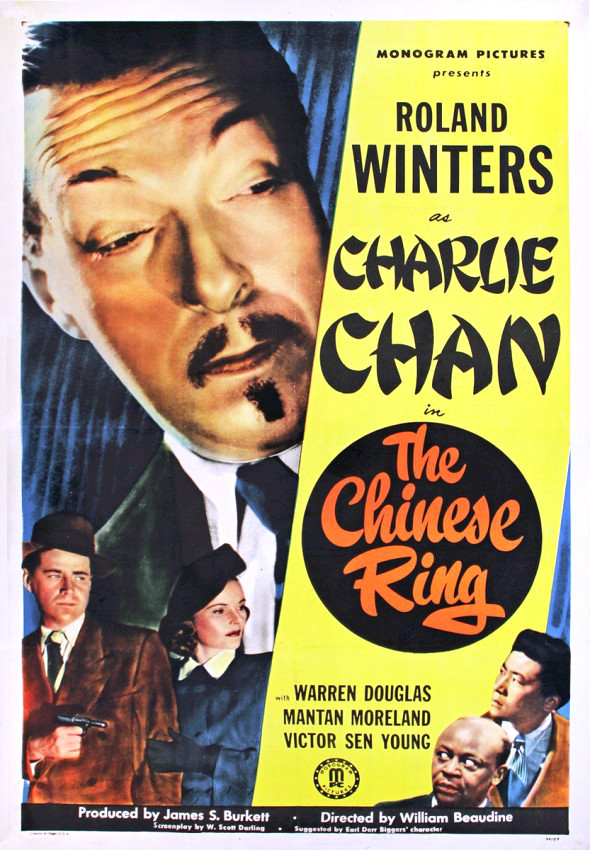 Wikimedia Commons
Wikimedia Commons - 1935
-
Merle Oberon, whose partial Indian ancestry she keeps a secret for most of her life, is nominated for a Best Actress Oscar. She is later credited as the first (and only) Asian-American ever nominated in that category.
- 1944
-
In Dragon Seed, Katharine Hepburn, plays Jade, a Chinese woman who stands up to Japanese invaders. Turhan Bey, who is of Turkish and Czech descent, co-stars as her husband.
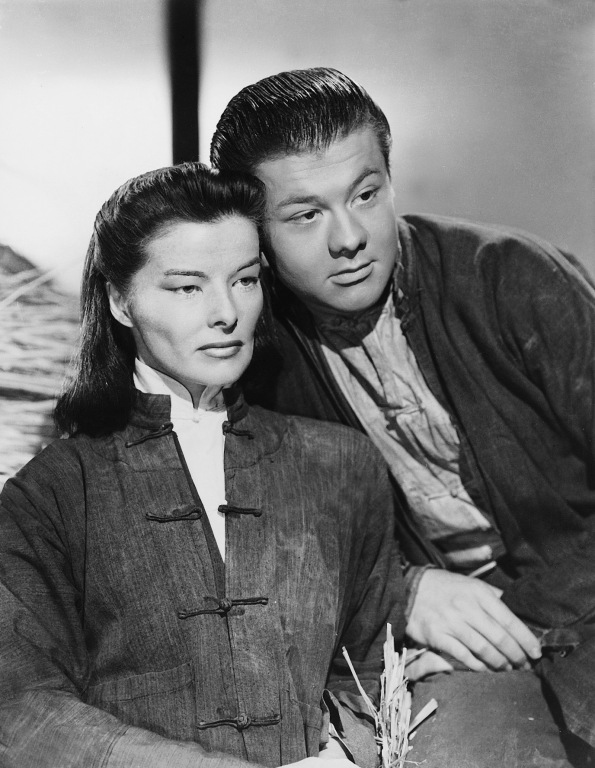 Katharine Hepburn and Turhan Bey in Dragon Seed. Wikimedia Commons
Katharine Hepburn and Turhan Bey in Dragon Seed. Wikimedia Commons - 1945
-
Rex Harrison portrays a Thai king in Anna and the King of Siam, the film adaptation of a semi-autobiographical novel of the same name. A 1951 remake continues to use non-Asian actors in the role—Russian-born Yul Brynner is the new king.
- 1956
-
Marlon Brando plays Sakini, a Japanese translator on the island of Okinawa after World War II, requiring hours of daily makeup work. “It was a horrible picture,” he later writes, “and I was miscast.”
- 1961
-
Mickey Rooney dons yellow-face, prosthetic teeth, and taped eyelids for his role as Audrey Hepburn’s temperamental landlord in Breakfast at Tiffany’s. (His “bucktoothed, myopic Japanese” is “broadly exotic,” the New York Times writes.) Rooney is later taken aback to learn that his portrayal is considered racist. “It breaks my heart,” he tells the Sacramento Bee in 2008, adding, jokingly, “Those that didn’t like it, I forgive them.”
 Breakfast at Tiffany’s Wikimedia Commons
Breakfast at Tiffany’s Wikimedia Commons - 1967
-
Sean Connery, 007, goes undercover Japanese in You Only Live Twice. (His makeup job would fool nobody, let alone a Bond villian.)
- 1972-75
-
In the TV series Kung Fu, David Carradine plays Kwai Chang Caine, a Buddhist monk versed in the martial arts. Bruce Lee had originally pitched the series and hoped to star in it, but the producers went with Carradine instead. Kung Fu became one of the most popular shows of its day.
David Carradine in Kung Fu. Wikimedia Commons - 1981
-
Asian actors and artists in California protest Hollywood’s attempt to revive Charlie Chan with Charlie Chan and the Curse of the Dragon Queen. “I don’t think racism is funny any more,” San Franciscan Eliza Chan tells the Washington Post. “We have been called “Charlie” for so many years. We have been made fun of—the way we speak, the way we act—people expect us to be like Charlie Chan, and we can’t stand that any more.”
- 1982
-
British actor Ben Kingsley, whose father is Indian, wins a Best Actor Oscar for Ghandi. He is the first—and as of 2017, the only—actor of Asian descent ever nominated in the category, much less win.
 Director Richard Attenborough, left, and actor Ben Kingsley pose with their Gandhi Oscars. Reed Saxon/AP
Director Richard Attenborough, left, and actor Ben Kingsley pose with their Gandhi Oscars. Reed Saxon/AP - 1984
-
Japanese-American actor Gedde Watanabe portrays the (ostensibly) Chinese exchange student Long Duk Dong in Sixteen Candles. Mainstream audiences find the caricature hilarious, but many Asian-Americans cringe. “Because there were so few Asian actors onscreen at that time, people were looking for Kurosawa in a comedy,” Watanabe recalls in a 30th anniversary interview. “Sixteen Candles wasn’t that kind of movie.”
 Gedde Watanabe as Long Duk Dong in Sixteen Candles.
Gedde Watanabe as Long Duk Dong in Sixteen Candles. - 1990
-
A British theater production of Miss Saigon, a retelling of Madame Butterfly in the context of the Vietnam War, almost doesn’t make it to Broadway after a union protests the casting of British actor Jonathan Pryce in a Eurasian role. Although Pryce, who wears eye prosthetics and bronzer for the performance, wins a Tony and the play goes on to become one of Broadway’s longest-running hits, Miss Saigon continues to be criticized for its stereotypical portrayals.
- 2003
-
Edward Zwick’s The Last Samurai features Tom Cruise as Capt. Nathan Algren, a guilt-wracked former Union Army soldier who gets to be the hero when he helps some rebel samurai fight a corrupt Japanese empire—it’s all about Cruise, of course. Washington Post critic Stephen Hunter savages the film: “Basically what Zwick has done is to take Kevin Costner’s Dances With Wolves and insert it into the Satsuma Rebellion of 1877, with a samurai clan in the role of an Indian tribe.”
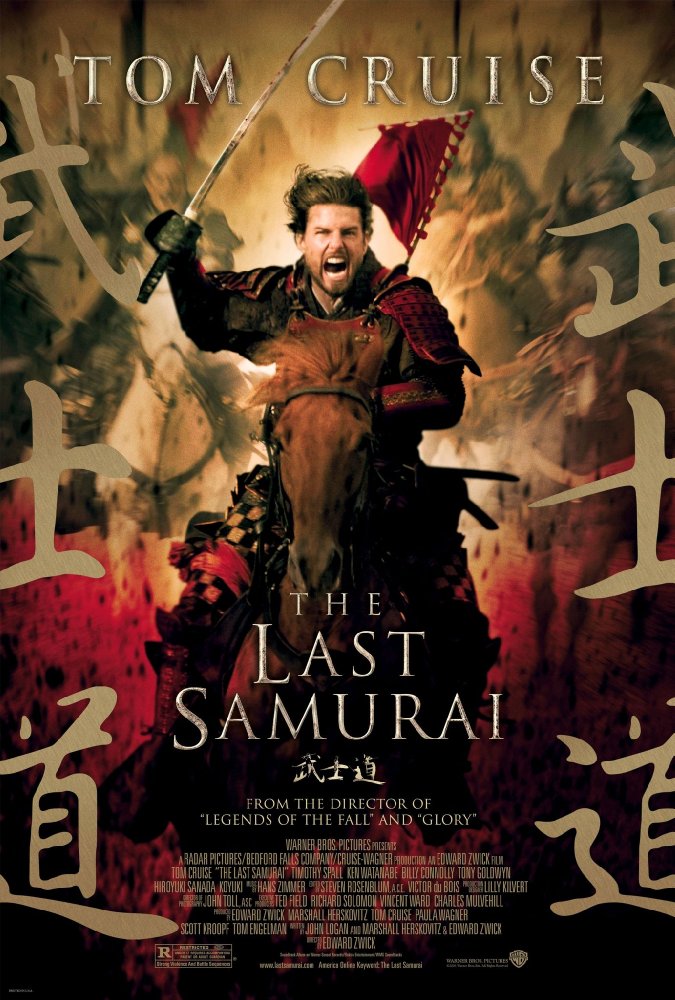 Warner Bros.
Warner Bros. - 2006
-
Ang Lee is the first Asian director to win an Oscar, for Brokeback Mountain.
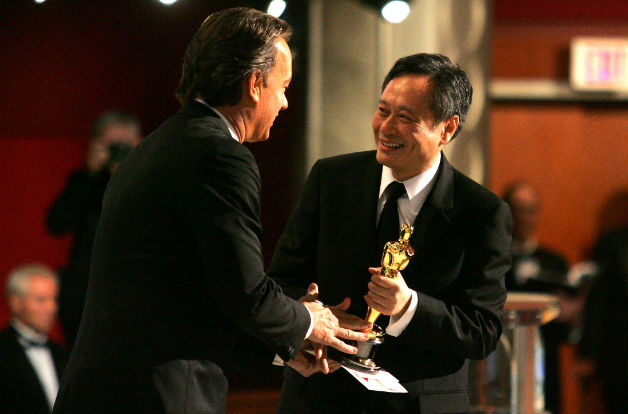 Director Ang Lee accepts his Oscar from Tom Hanks. Chris Carlson/AP
Director Ang Lee accepts his Oscar from Tom Hanks. Chris Carlson/AP - 2010
-
White actors play the leads in the live-action film adaptation of Avatar: The Last Airbender, previously an animated series with characters of Asian and Native American descent. Fans pan it and the movie flops.
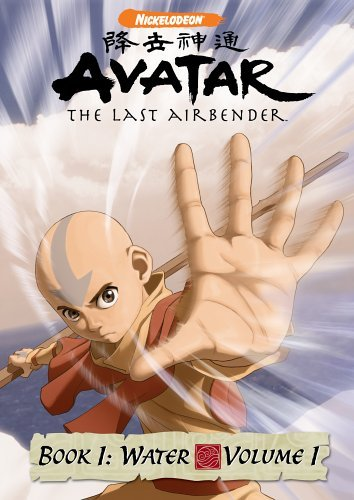 Avatar: The Last Airbender series. Nickelodeon
Avatar: The Last Airbender series. Nickelodeon The Last Airbender movie. Paramount Pictures
The Last Airbender movie. Paramount Pictures - 2012
-
White actor Jim Sturgess dons yellowface and doctored eyes to play a Korean character in Cloud Atlas. Director Andy Wachowski defends the casting: “The intention is to talk about things that are beyond race. The character of this film is humanity.” It’s not Sturgess’ first brush with whitewashing: In 21, a film based on the true story of college card-counters who gamed the casinos, he plays a student who in real life was Chinese-American.
- 2015
-
Emma Stone stars as a half-Asian character in Aloha, which flops at the box office. The role, she says later, opened her eyes to Hollywood’s diversity problems and “flaws in the system.” Director Cameron Crowe also apologizes, calling the casting “misguided.”
- Feb. 2016
-
In an otherwise spot-on monologue—”I’m here at the Academy Awards, otherwise known as the White People’s Choice Awards”—Oscars host Chris Rock rips Hollywood’s lack of diversity, yet manages to stereotype Asian Americans, who are all but invisible in American films
- April 2016
-
The creators of Ghost in the Shell, adapted from a Japanese manga and anime film, face backlash after casting Scarlett Johansson as the Japanese main character. Tilda Swinton also gets hit with criticism for her role as the Ancient One, a Tibetan character, in Dr. Strange.
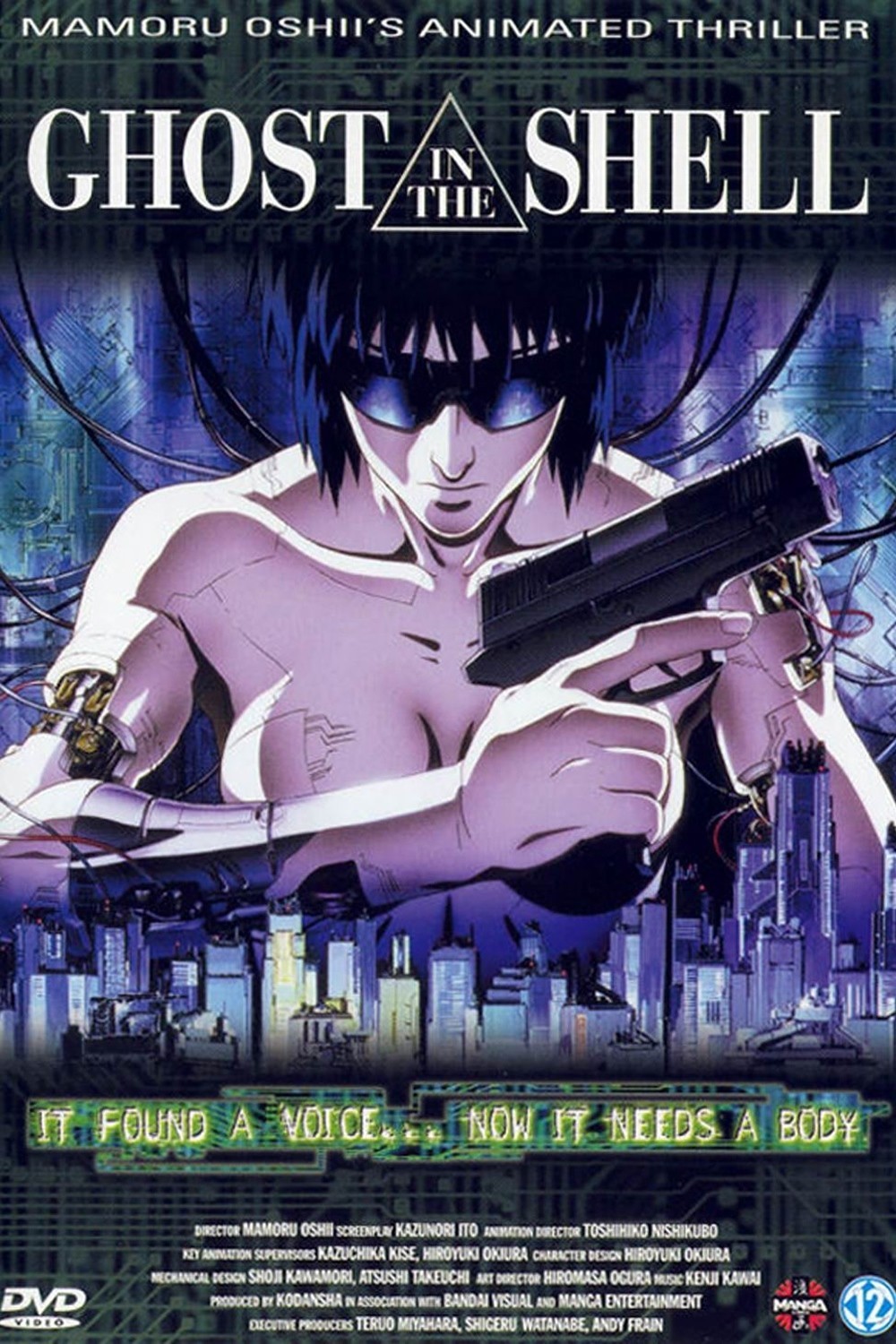 Ghost in the Shell, 1995. Production IG
Ghost in the Shell, 1995. Production IG Ghost in the Shell, 2017. Paramount Pictures
Ghost in the Shell, 2017. Paramount Pictures - May 2016
-
Comedian Margaret Cho, Nerds of Color blogger Keith Chow, author Ellen Oh and other Asian Americans start a monthlong #WhiteWashedOut campaign that calls on Hollywood to stop whitewashing Asians and for white actors to reject Asian roles.
#whitewashedOUT means the continued stereotype of the unattractive Asian male, the submissive Asian woman, the tiger mom, etc.
— ??Ellen Oh?? (@ElloEllenOh) May 3, 2016
Not a sidekick. Not a sidechick. #whitewashedOUT
— Margaret Cho (@margaretcho) May 3, 2016
There’s a real problem with Asian representation in Hollywood, and we’re #WhitewashedOUT. https://t.co/6ejm80GYYN pic.twitter.com/nZX1EZlzvJ
— Book Riot Comics (@BookRiotComics) May 3, 2016
#whitewashedOUT meant it took years for me to realize writing Asian protags was possible. I cast myself as the sidekick in my own stories.
— Sarah Kuhn (@sarahkuhn) May 3, 2016
I didn’t think seeing Indian Americans mattered to me until @mindykaling. Until I cried seeing @azizansari on Netflix. #whitewashedOUT
— Amitha Knight (@amithaknight) May 3, 2016
- Nov. 2016
-
Hong Kong actor and director Jackie Chan accepts an honorary Oscar at the Governors Awards in an emotional speech: “After 56 years in the film industry, making more than 200 films, breaking so many bones, finally this is mine.” He is one of four filmmakers to receive the lifetime achievement award.
 Jackie Chan at the Governors Awards. Chris Pizzello/AP
Jackie Chan at the Governors Awards. Chris Pizzello/AP - Feb. 2017
-
Matt Damon plays a European mercenary who saves China from monsters in The Great Wall. Actress Constance Wu takes issue: “We like our color and our culture and our strengths and our own stories,” she writes. “Hollywood is supposed to be about making great stories. So make them.”

